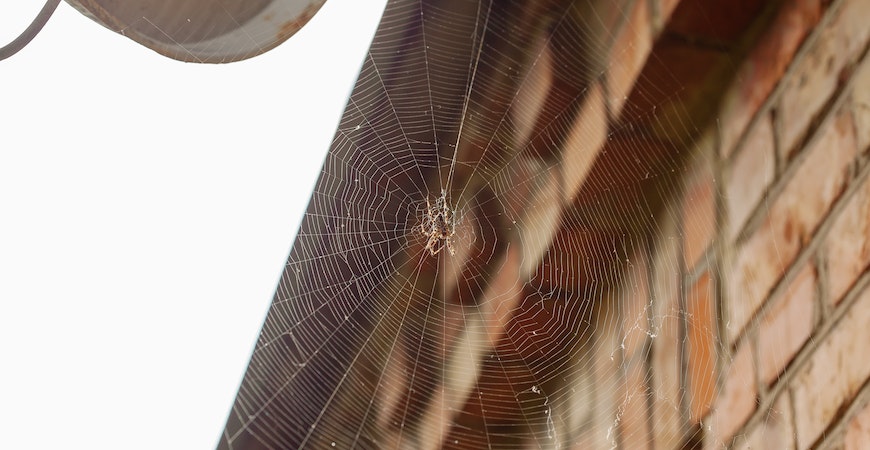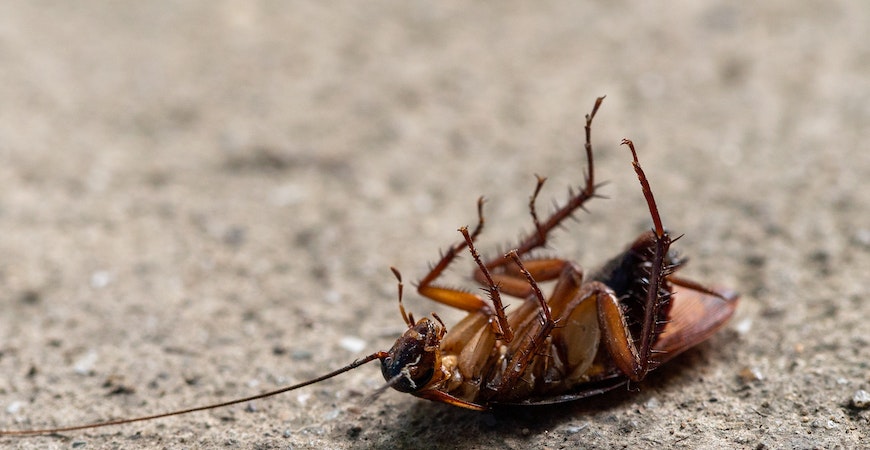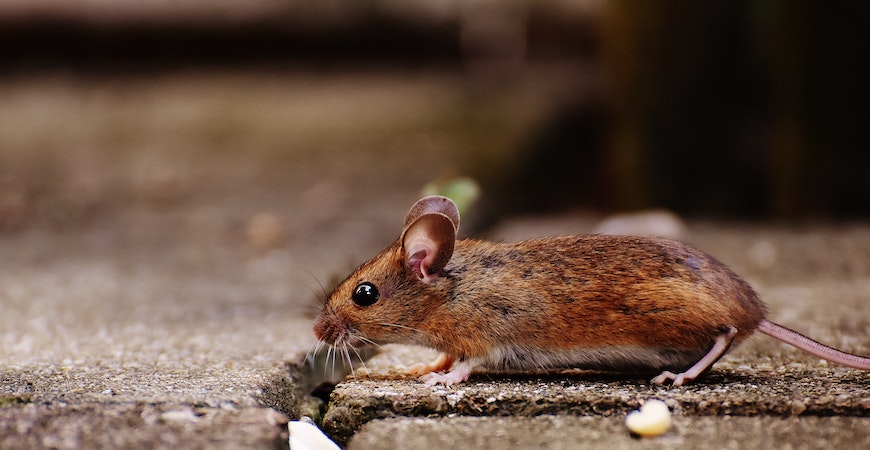
How to Prevent Fall Pests From Taking Over
Despite what all of society’s coolest entomologists say, bugs are nobody’s friend. And, as the leaves change color and temperatures begin to drop, you’ll need to take effective fall pest control measures to keep these creatures from encroaching into your space.
No, we’re not talking about burning your home while you cheer the extermination of numerous insect colonies. We’re talking about tactics that are safe, impactful, and don’t result in insurance investigations.
So, if the thought of bugs, insects, and other creepy-crawlies makes you physically uncomfortable, steel your resolve and read through our fall pest control tips. You’re only a few hundred words away from a pest-free fall.
Our 5 (Least) Favorite Fall Pests
1. Spiders
Spiders live a sweet life. They get to move into any house they want, and any discussion about smushing one or removing it from your home is met with a cry that the spider’s presence in your home keeps other pests out.
Well, the enemy of your enemy can still be an enemy. So, on this website, no one will ever second-guess a forced spider removal.
But, even better than kicking these arachnids out is to ensure they never get in.
There are two tactics here that work. The first is to make your home as inhospitable to the spider population as possible.
Spiders like to hide. The presence of dark, dusty spaces indicates to them that they, too, will be left undisturbed.
So, clean those unkempt corners in every room. If spiders feel like their hiding spot is no longer hidden, they’ll move on to a new one with a lower shot of being discovered — preferably one not in your home.

The second tactic is Miss Muffet’s Revenge. It’s an easy-to-use spider spray for inside and outside your house.
Application is easy. Spray cobwebs and return the next day to sweep them away.
You can also create a barrier that spiders dare not cross by applying the spider spray in a 12-inch band along your home’s exterior perimeter. Double that up by spraying a four-inch band inside your home where you notice recurring spider activity.
In many cases, a single application will keep spiders away for up to 12 months. So, start spraying before spider mating season kicks into high gear.
2. Centipedes
Centipedes prefer dark, damp spots that keep them warm as temperatures drop from sweltering to crisp. Like spiders, they have a reputation for hunting other pests in your home.
That said, no one likes to flick on a light and find a creature with an uncountable amount of legs. That is the epitome of a nightmare.
The best way to keep them out is to walk around your home’s perimeter. If you find any cracks, seal them with exterior caulk.
Inside your home, make sure moisture has a chance to escape typically humid places, like bathrooms, beneath sinks, and laundry rooms.
Despite their antagonistic appearance, you shouldn’t be too concerned if you only find a centipede or two in the fall months. However, if you notice an abundance in closets, bathrooms, or basements, it’s time to hire a pest control expert.
3. Cockroaches
Cockroaches invite a certain type of panic that other pests do not. While the sight of a spider or ladybug may not make you feel good, the presence of a single cockroach is enough to make you feel actively dirty.
Before we launch into some cockroach prevention tactics, let’s take a moment to recognize that it is inevitable that you will find one in your home at some point. It could simply be an outdoor variety that has made its way inside.
That said, they are a major source of allergens and are one of the risk factors in the development of asthma in children. So, while you shouldn’t fall into a pit of despair if you come across one, you should step up your cockroach control game.
Again, there are two tactics to take here. The first is to identify areas of entry and seal them off as best you can.
The second tactic is removing any potentially cockroach-enticing elements. That means taking practical steps to remove potential food sources:
- Food crumbs in bedrooms, living rooms, or offices
- Opened, exposed food in your pantry
- Leftover pet food that remains exposed in a food bowl all night
- Lingering spills
Proper food storage is key here. Even the simple act of returning leftover pet food to a sealed container every night will remove a major source of potential food for cockroaches.
A cockroach or two in the fall may not signify a large infestation needing a professional resolution. But if you’re seeing cockroaches during the day, a large number of them in a short period, or if you’ve identified German cockroaches as the invading species, you’ll need a professional pest control solution immediately.
4. Ladybugs
It doesn’t feel good to include ladybugs on this list. After all, of all the pests we’re talking about, the ladybug is the one most likely to be the protagonist in a children’s cartoon.
That said, they reproduce quickly, seek out house-based hiding spots in large numbers during fall and winter, and have we mentioned how quickly they reproduce? It doesn’t take much time for a tea-party-sized gathering of ladybugs to turn into a trauma-inducing infestation.
You can usually find them near windows, inside walls, and around typically less-occupied spots like garages, attics, and even porch overhangs. To keep them from getting inside your home, you’ll want to properly seal any cracks in your home’s exterior and repair any window screens.
Bay leaves, and cloves can also serve as a natural repellent. Bundle them up and strategically place them where you’ve seen ladybugs accumulate to add another layer of protection.
The warm aroma of these spices can also help with another common ladybug-related issue: odor. When disturbed or crushed, they give off a lingering musty scent.
So, when it comes to how to remove ladybugs from your house, the best strategy is to do so gently. Sweep them away and release them outside, or, if necessary, vacuum them up.
5. Mice and rats
Insects aren’t the only creatures that qualify as pests. Anyone with a younger brother understands this on a genetically deep level.
But like the other nuisances listed above, mice and rats spend autumn looking for a warmer place to spend the colder months. And if you’re not careful, you may be inviting them inside without even realizing it.
As with all of our fall pest control measures, keeping mice and rats outside your home is critical. So, seal up any cracks or holes in your home’s exterior. For especially big or wide holes, stuff them with steel wool first.
To prevent nests outside, remove any piles of leaves or branches from your yard. Turn compost when adding new food scraps.
Inside your home, make sure to clean up crumbs, spills, and exposed food sources. If you typically keep bread on your counter, for instance, keep it in a hardened bread box or plastic container.
Even better, ensure that all your food that isn’t locked away is protected by something hard and unchewable. Plastic bags provide no resistance to sharp mice teeth.
And, of course, rodents have a wider definition of food than humans. So, find a plastic container, an out-of-reach spot for things like flavored medicine.
Simple and Effective Fall Pest Control Tips
With most pests, the best control method is to make your home inaccessible and inhospitable to these unwelcome creatures. Removing food sources and hiding spots, as well as sealing potential entryways, will alter their cost-benefit analysis of coming inside your abode.
That said, sometimes prevention isn’t enough. If you’re spending much of your waking hours shooing, smashing, and strategizing ways to deal with your infestation, it may be best to consider a professional pest control option.














